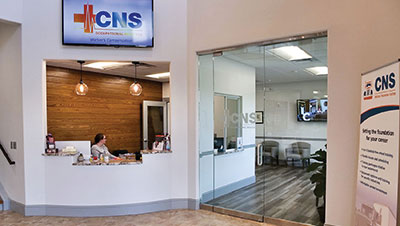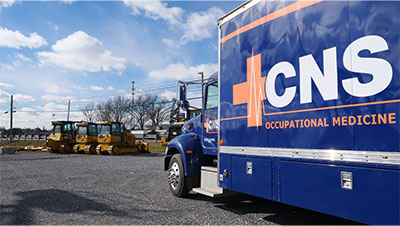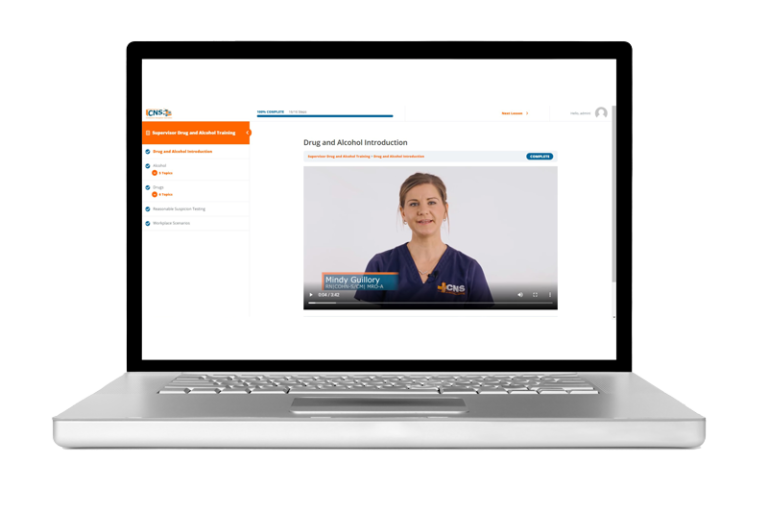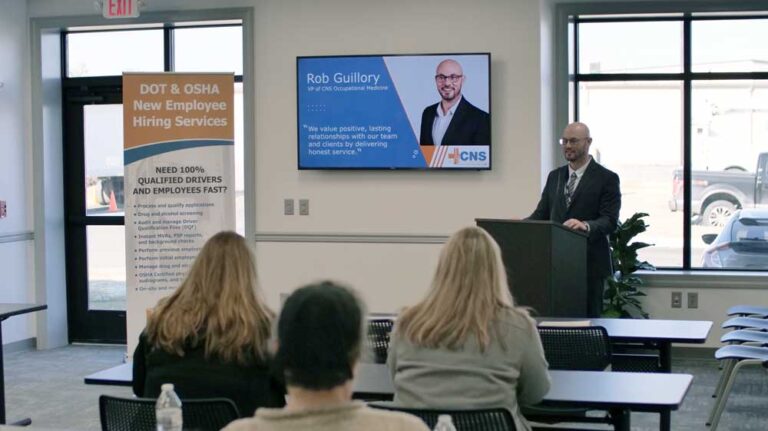Are your employees protected from hazardous noise in the workplace? Find out with a noise dosimeter survey.
Any employer whose employees are exposed to noise levels of 85dB or greater must comply with the OSHA Hearing Conservation Program as described in 29 CFR 1910.95.
OSHA requires a noise survey to determine if workers are exposed to noise that could damage their hearing.
OSHA does not specify a time schedule for conducting noise monitoring. Instead, employers are required to repeat noise surveys whenever there is a change in processes, procedures, or exposure time that may lead to changes in employee noise exposures.
Noise surveys should be conducted in the workplace to determine which employees need to remain in the hearing conservation program, including which employees can be removed and/or should be added.
Many companies choose to conduct surveys periodically (once every year or two) to ensure that all exposed employees are included in their hearing conservation programs.
How do you know if a sound is too loud?
The most common place people are exposed to harmful noise levels is at the workplace, putting them at risk of noise-induced hearing loss (NIHL) that often takes years to develop.
Your employees may be experiencing signs of hearing damage (such as muffled sound or ringing in the ears) after hazardous noise exposure.
A quick rule of thumb: if you need to raise your voice to speak to someone three feet away, then it may be too loud, or over 85dB.
Our noise specialists will study the ambient noise around the workplace, especially around high noise equipment or tasks.
However, even sudden blasts at a worksite that only last a few seconds could cause severe hearing damage.
Audiometric testing may be needed to monitor an employee’s hearing over time.
A workplace noise survey involves measuring noise levels throughout a facility using instruments in high noise areas, equipment, or tasks. Information gathered during testing will be used to develop a “map” of high-risk areas and can be used to develop and implement noise controls.
Specialized equipment is used to conduct the surveys, such as sound level meters which measure and display the sound level in real time and personal noise dosimeters that are portable devices worn by workers for extended periods of time throughout the work shift.
What are the OSHA Regulations?
Any employer whose employees are exposed to noise levels of 85dB or greater must comply with the OSHA Hearing Conservation Program as described in 29 CFR 1910.95.
Per OSHA, employees must be placed in a hearing conservation program if they are exposed to average noise levels of 85dB or greater during an 8-hour workday.
To determine if the employees’ exposures are at or above this level, it is necessary to measure or monitor the actual noise levels in the workplace.
OSHA 29 CFR 1910.95(c, d) – “Hearing conservation program and monitoring”
- The employer shall administer a continuing, effective hearing conservation program whenever employee noise exposures equal or exceed an 8-hour time-weighted average sound level (TWA) of 85 decibels measured on the A scale (slow response) or, equivalently, a dose of fifty percent.
- When information indicates that any employee’s exposure may equal or exceed an 8-hour time-weighted average of 85 decibels, the employer shall develop and implement a monitoring program.
- All continuous, intermittent, and impulsive sound levels from 80 decibels to 130 decibels shall be integrated into the noise measurements.
- Monitoring shall be repeated whenever a change in production, process, equipment, or controls increases noise exposures to the extent that:
- Additional employees may be exposed at or above the action level; or
- The attenuation provided by hearing protectors being used by employees may be rendered inadequate to meet the requirements of paragraph (j) of this section.
CNS Occupational Medicine has experience in performing workplace noise monitoring and will identify high noise areas and processes that could lead to noise induced hearing loss.
Our noise monitoring services can provide solutions to reduce employee noise exposures and maintain compliance with the OSHA Hearing Conservation Program should it be required.
What does CNS Occupational Medicine do?
CNS Occupational Medicine conducts noise monitoring utilizing sophisticated and calibrated equipment such as sound level meters and personal noise dosimeters.
- Ahead of arriving at the site, our certified noise specialist will work with the company to discover information about employer’s size, operation, designated work areas, workflows, previous noise surveys, and noise exposures.
- Once on site, the certified noise specialist will setup the noise leveling meters and distribute the personal noise dosimeters.
- The specialist will record ambient noise in various areas, including high-noise tasks and equipment.
- Following an employee and facility noise assessment survey, our noise specialist will prepare detailed reporting and sound level mapping to show area, task and individual exposure levels as they relate to the OSHA regulatory compliance.
- The noise survey mapping will pinpoint areas, equipment, and process of concern to assist with implementation of noise controls.
The Noise Measurement Survey is an on-site service. Amount of time onsite will vary based company size, number of employees, and degree of high-risk areas.
Please call to speak with our specialist today to determine a service that meets your needs, contact us at 800.551.9816 or info@cnsoccmed.com.










